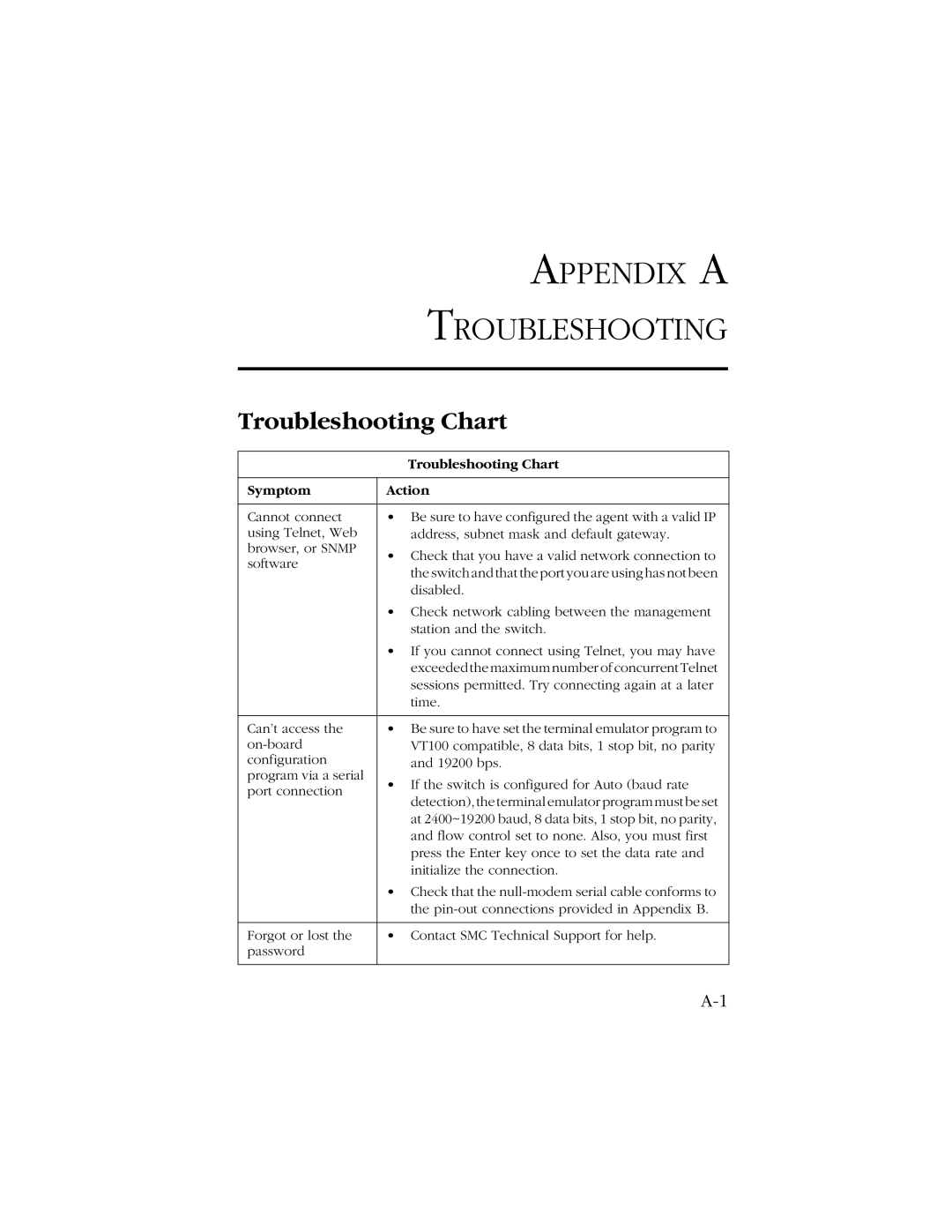APPENDIX A
TROUBLESHOOTING
Troubleshooting Chart
| Troubleshooting Chart | |
|
| |
Symptom | Action | |
|
| |
Cannot connect | • Be sure to have configured the agent with a valid IP | |
using Telnet, Web | address, subnet mask and default gateway. | |
browser, or SNMP | • Check that you have a valid network connection to | |
software | ||
the switch and that the port you are using has not been | ||
| ||
| disabled. | |
| • Check network cabling between the management | |
| station and the switch. | |
| • If you cannot connect using Telnet, you may have | |
| exceeded the maximum number of concurrent Telnet | |
| sessions permitted. Try connecting again at a later | |
| time. | |
|
| |
Can’t access the | • Be sure to have set the terminal emulator program to | |
VT100 compatible, 8 data bits, 1 stop bit, no parity | ||
configuration | and 19200 bps. | |
program via a serial | • If the switch is configured for Auto (baud rate | |
port connection | ||
detection), the terminal emulator program must be set | ||
| ||
| at 2400~19200 baud, 8 data bits, 1 stop bit, no parity, | |
| and flow control set to none. Also, you must first | |
| press the Enter key once to set the data rate and | |
| initialize the connection. | |
| • Check that the | |
| the | |
|
| |
Forgot or lost the | • Contact SMC Technical Support for help. | |
password |
| |
|
|
